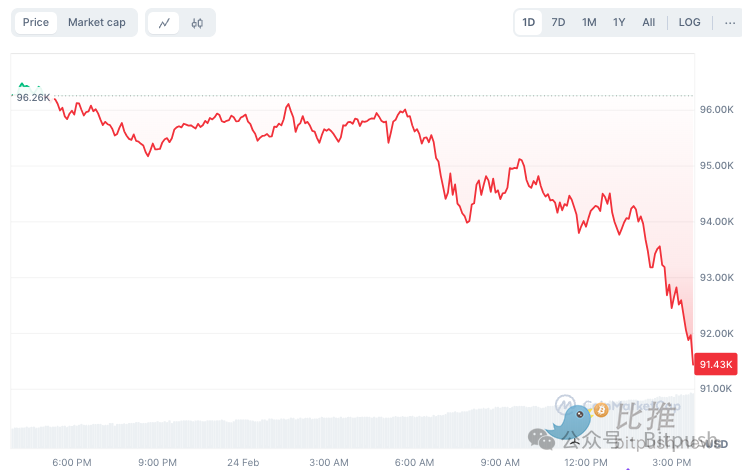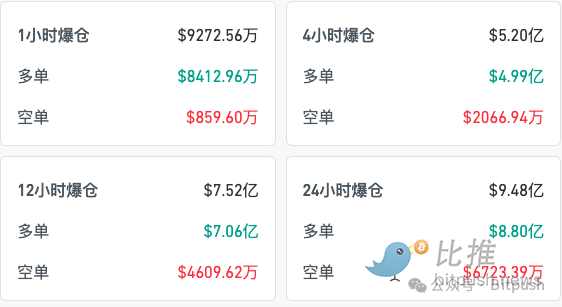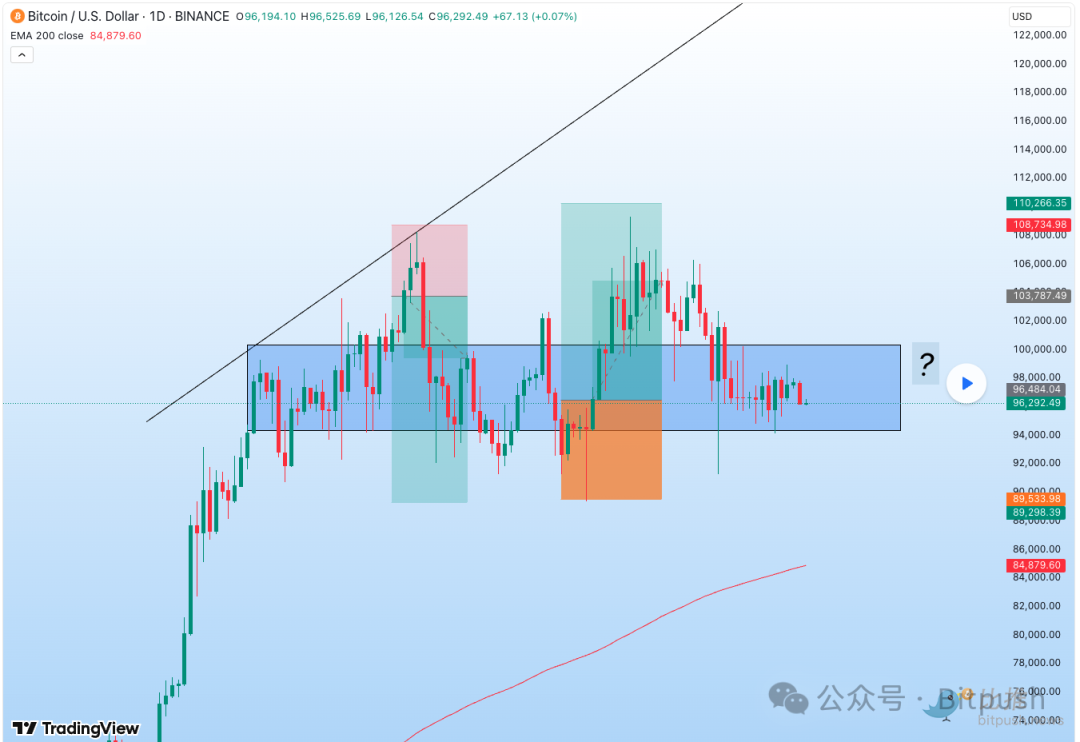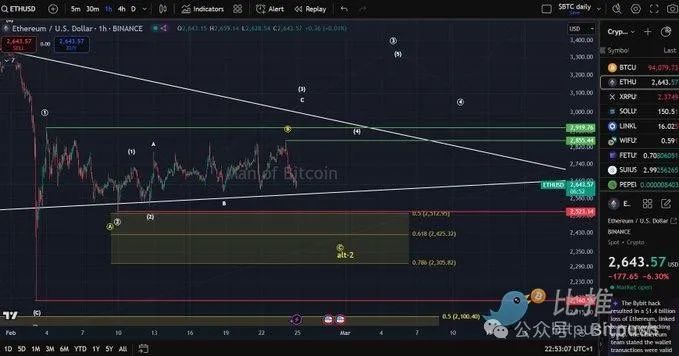Ethereum is currently facing greater downward pressure, and market sentiment tends to be cautious.
The crypto market started the week sharply down. In the past 24 hours, Bitcoin has fallen 5% and once fell below the $91,000 mark, setting a monthly low. Other mainstream currencies generally fell: Solana (SOL) fell more than 16%, Ethereum and XRP fell 12%, BNB was relatively “moderate”, down 6%, and more than 90% of the top 100 tokens in market value suffered losses.

Coinglass data shows that as of press time, the amount of open positions on the entire encryption network reached US$950 million in 24 hours, mainly with multiple orders, with a total of 314,902 people around the world being sold.

Bitcoin: 200-day moving average determines the future direction

Tomarket, chart analyst at TradingView, said that the daily chart of Bitcoin (BTC/USD) shows that prices are currently in a shock consolidation stage, with the range of fluctuations limited to a clear range (blue rectangular area above). This pattern indicates that the market is in a stalemate in a long and short game, with neither buyer and seller occupying a clear advantage.
From a technical point of view, the key resistance level is in the range of US$100,000 to US$103,787. A break through this level could start a new round of gains, with the target looking at US$108,734 to US$110,266. On the other hand, short-term support is in the range of US$96,484 to US$97,065, and a break below may trigger more selling pressure. In the long term, the US$89,533 to US$84,773 region (200-day moving average) is an important support level and has historically been a strong demand area in trend markets.
The 200-day moving average ($84,773) is a key long-term support and could attract buying if prices pull back into this area.
In terms of potential market trends, if the price falls below US$96,000, it may indicate an increase in selling pressure, further testing the US$89,533 to US$85,000 region, or even a loss of the 200-day moving average, triggering a deeper correction. If it exceeds US$103,787, it may trigger a continuation of the upward trend, with the target looking towards US$108,734 and US$110,266, and may even exceed US$120,000 to hit a record high.
To sum up, Bitcoin is currently in the shock consolidation stage, and the 200-day moving average is a key long-term support level. Traders should pay close attention to the price performance of these key areas to judge the next step of the market.
Ethereum faces a sharp decline, market sentiment becomes cautious
One possible reason for ETH’s poor performance is that some traders had expected Bybit to buy large quantities of ETH on the open market to make up for losses, but this assumption proved to be false, resulting in traders having to close positions.
Data showed that open interest in Ethereum futures fell from 8.82 million ETH to 8.52 million ETH on February 24, indicating that traders are closing leveraged positions. Well-known cryptocurrency analyst Crypto Rover issued a warning on Twitter, saying that if Ethereum (ETH) continues to fall sharply, it may cause market concerns about whether the copycat season can continue.
On-line data shows that in the past 24 hours, the number of active Ethereum addresses has dropped by 7% to 450,000, and network activity may be declining. From technical analysis, ETH prices have fallen below the 50-day moving average, showing bearish momentum.@Manofbitcoin analyzed on platform X that ETH support is between US$2,512 and US$2,305. Only a continuous breakthrough of US$2,919 will the upward trend be confirmed.

To sum up, Ethereum is currently facing greater downward pressure, and market sentiment tends to be cautious. Leveraged closings and the subsequent impact of the Bybit incident exacerbated price volatility. The potential decline in ETH prices may have a ripple effect on the altcoin market, and investors need to pay close attention to key support levels and changes in market sentiment.



